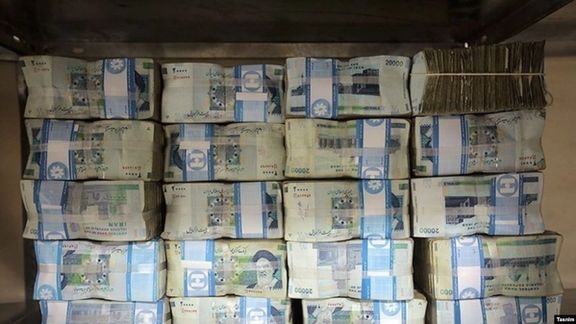Jump In Liquidity Shows Iran Continues Printing Money

Liquidity in Iran has increased by $14 billion in the past six months, figures released by the central bank show, keeping annual inflation above 40 percent.

Liquidity in Iran has increased by $14 billion in the past six months, figures released by the central bank show, keeping annual inflation above 40 percent.
Total liquidity reached 44,270 trillion rials or $177 billion based on the current free-market exchange rate, as the government borrowed and printed money to pay for its needs.
The dangerous growth in liquidity occurred during the first six months of President Ebrahim Raisi’s term, despite his government’s repeated promises to curtail liquidity growth, which has led to four years of high, double-digit inflation.
The negative economic news published on Sunday comes as the government has been claiming a substantial increase in oil and non-oil exports revenues.
Ali Salehabadi, chairman of the Central Bank of Iran (CBI) told local television on Sunday that from March 2021 the government has been able to provide $48.6 billion in foreign currency for imports amid US sanctions on the country’s oil exports and international banking. This amount from March 2020 to March 2021 was $37 billion, Salehabadi said. The boost in allocation of US dollars for imports was more than 30 percent if the figures by the central bank chief are correct.
It is not easy to reconcile the two claims. If Iran earned 30 percent more foreign currency since March, and also printed more money, it means a decision was made to continue the inflationary practice of enlarging liquidity, instead of using the additional foreign currency to fight rising prices.
The annual inflation rate has been hovering above 40 percent for at least a year, with food prices rising at 60 percent annually, creating serious political risks for the Islamic Republic.
The government’s debt to the central bank increased by 3 percent and reached $8 billion, in addition to debts to government-owned and quasi-state banks.
The Raisi government faces a 50-percent budget deficit in the new Iranian year starting March 21 and as parliament grapples with the proposed budget bill it is not clear how the deficit will be addressed. In past years, the government has avoided clear explanations, indicating that printing money was the main source of income.
This is partially to blame for the steep fall in the value of the national currency that has declined almost eightfold since late 2017, from 33,000 rials to the US dollar to 267,000 on Monday.
Iran’s hopes can only rest on a nuclear agreement with the United States, which would lift sanctions on its oil exports and international banking. But local economists have warned that additional exports will be a partial and temporary cure for an economy that has had no growth in the past decade. Iran would need ten years of annual 8-percent economic growth to return to where it was in 2010 when the United Nations started imposing nuclear sanctions, which were lifted in 2015 after a nuclear agreement was signed.
Former US president Donald Trump withdrew from that accord in 2018 and reimposed American sanctions.
Although Iran has increased its sanction-busting oil exports in the past one year, primarily to China, it is not clear how much cash revenue it gets. Chinese are willing to buy heavily discounted oil but it is not clear if they are willing to pay in cash through banks in violation of US banking sanctions.